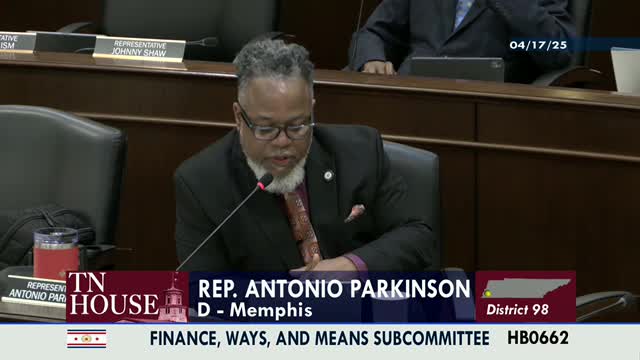Tennessee officials debate funding disparities impacting Memphis Shelby County Schools performance
April 17, 2025 | Finance, Ways, and Means, House of Representatives, Committees, Legislative, Tennessee
Thanks to Scribe from Workplace AI , all articles about Tennessee are free for you to enjoy throughout 2025!

This article was created by AI using a video recording of the meeting. It summarizes the key points discussed, but for full details and context, please refer to the video of the full meeting. Link to Full Meeting
Chairman White pointed out that $900 million from the state budget is directed towards Memphis and Shelby County Schools. However, some committee members argued that a significant portion of this funding consists of federal dollars, which could diminish the actual state investment. The conversation quickly shifted to the Tennessee Achievement School District, where a staggering $2 billion has been invested over 15 years with little to show in terms of educational improvement.
One member emphasized the dismal reading proficiency rates, revealing that only 30.5% of students in Memphis and Shelby County Schools meet reading standards, compared to 35.6% statewide. This stark comparison led to a broader critique of the return on investment in education, with lawmakers questioning the effectiveness of current funding strategies.
Another representative highlighted the disproportionate distribution of state funds, noting that while Memphis and Shelby County Schools receive a significant share, the remaining 146 districts are left to divide the rest of the $7 billion allocated for K-12 education. This raises concerns about equity and the adequacy of resources for schools serving economically disadvantaged students.
The discussion underscored the urgent need for a reevaluation of educational funding in Tennessee, particularly in light of the challenges faced by students from low-income families. As lawmakers continue to grapple with these issues, the future of educational equity and student success in the state remains uncertain.
Converted from Tennessee House of Representatives - Finance, Ways, and Means Subcommittee - Apr 17, 2025 meeting on April 17, 2025
Link to Full Meeting
Comments
View full meeting
This article is based on a recent meeting—watch the full video and explore the complete transcript for deeper insights into the discussion.
View full meeting